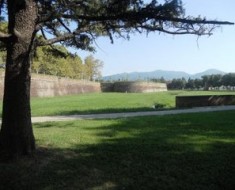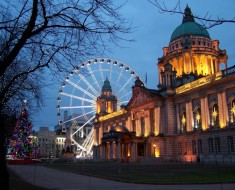This is a bit of a cheat because of course Herculaneum was destroyed, as was the great city of Pompeii on the afternoon of August 24th AD 79. But visiting its excavated remains a few years ago, it felt to us like a real place with much of its original life as a small and wealthy seaside resort preserved. Most of the people fled when Vesuvius, extinct for 800 years, suddenly erupted and first destroyed Pompeii. The destruction of its smaller neighbour was delayed until the next morning, so most of the inhabitants had time to flee from the area. Despite that more than 200 people sought shelter in the boat houses by the beach, but the debris which had reached the stratosphere on the previous night, then descended at a frantic speed and within seconds the gas, ash and rock killed them all. The remarkable thing is that the main structures of the buildings (unaffected by the first phase of the eruption), lay beneath the ground for centuries before excavation began in 1738. The skeletons of those who had sheltered by the beech all those years ago, were intact.
Only some of the area has been recovered, the majority of the old town still buried deep below the (very ordinary!) contemporary town above it. But the work continues and there is a strong British connection there with regular digs going on every summer by students and others. Some months ago we heard one of them give an excellent lecture on their work.
The town was named after the mythical figure of Hercules and its history goes back well before Roman times. Julius Caesar’s father lived there and possessed an enormous library in his luxurious house, known now as the Villa of the Papyri. Apparently he was a patron of poets and philosophers. We have seen examples of the remains of the scrolls some of which are in the Naples National Library. Although badly carbonised, some have been successfully unrolled with the prospect of techniques being developed that eventually may actually interpret them.
His is one of several extinct villas, and with the broad streets separating them, they add to one’s sense of visiting a city which preserves it’s varied life and reveals its culture. We were very moved as we stood back and surveyed the visible part of the ancient city which has now been unearthed . You can almost see the busyness and the bustle of a seaside town. Despite its sad story, we loved being there. A memorable visit.
Bryan




